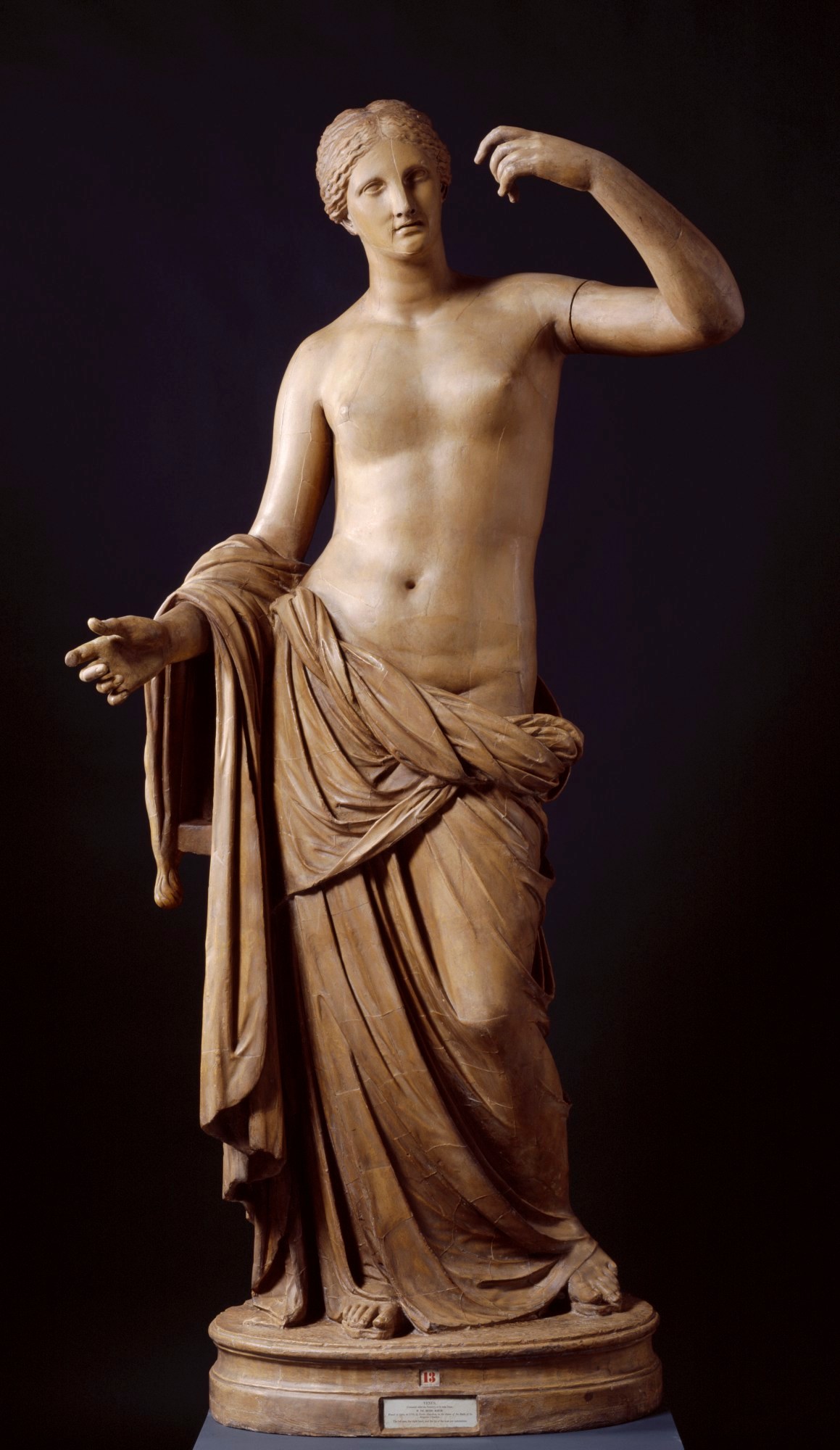
Unidentified Roman sculptor, Cast of the Townley Venus, 1813.
Plaster cast. 2118 mm x 916 mm x 710 mm, Weight: 150 kg. © Photo: Royal Academy of Arts, London. Photographer: Paul Highnam.
This image is not available to download. To licence this image for commercial purposes, contact our Picture Library at picturelibrary@royalacademy.org.uk
Cast of the Townley Venus, 1813
After Unidentified Roman sculptor
RA Collection: Art
This is a plaster cast of a Roman sculpture, the Townley Venus, now in the British Museum. It was found among the ruins of the Baths of the Emperor Claudius in Ostia by the artist, archaeologist and dealer Gavin Hamilton in 1775. Hamilton quickly entered negotiations to sell the statue to Charles Townley (1737-1805), a collector and antiquary who formed a famed collection of Classical antiquities in the late 18th century. Hamilton first alluded to the statue in a letter to Townley of January 1776, after which extended negotiations were conducted before the agreement to purchase finally took place in May 1777. The statue was not noted in Rome before its export, which Hamilton deliberately concealed—even shipping the statue to England as two separate fragments.
The Townley Venus was purchased by the British Museum in 1805, and in 1813 RA Council minutes record it was 'Resolved that a cast of the Venus in the Townley Collection be purchased for the Antique Academy.. moved by Mr Westmacott'. Later in 1813 Council determined 'that the Treasurer pay to Mr Theed RA. EL. 15 guineas for a cast of a Venus in the Townley Collection, purchased by him for the Academy at the request of the Council’. After the Royal Academy moved to Burlington House the cast was installed in a niche at the top of the main staircase, along with a plaster cast of the Venus de’ Medici until they were replaced by bronze statues of Gainsborough and Turner in the 1930s.
Townley variously identified the statue as Ariadne or Libera, but since 1808 she has been universally recognized as Venus (the name under which Hamilton offered her to Townley).
Further reading
Francis Haskell and Nicholas Penny, Taste and the Antique (London and New Haven: Yale University Press, 1981), p.68
Object details
2118 mm x 916 mm x 710 mm, Weight: 150 kg
Start exploring the RA Collection
- Explore art works, paint-smeared palettes, scribbled letters and more...
- Artists and architects have run the RA for 250 years.
Our Collection is a record of them.



